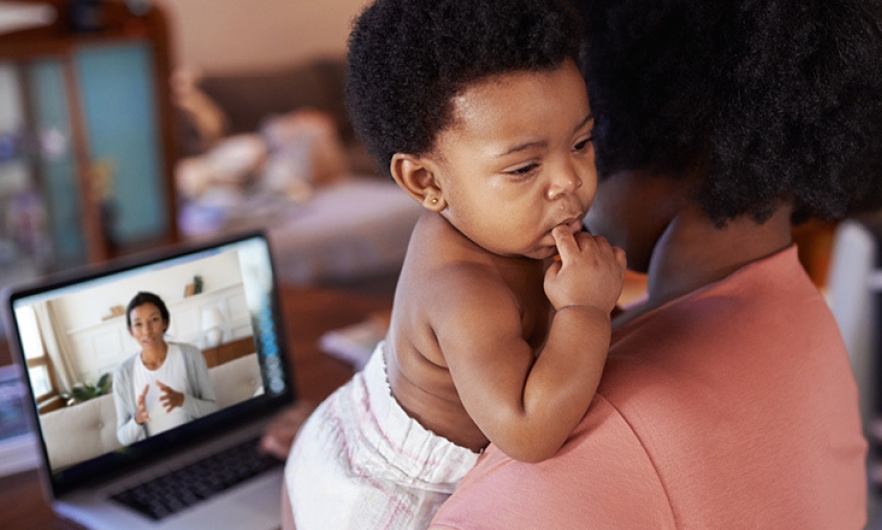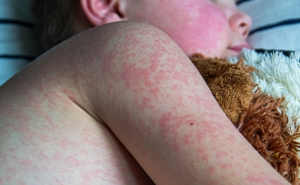Home Visiting Programs Adapt to Connect with Vulnerable Families

For vulnerable families, COVID 19 has hit hard.
They’re disproportionately burdened by job loss, many do essential and stressful work in hospitals, and they’re more likely to lack the resources to homeschool their children and go to work. Those who are new parents or are expecting are further challenged, says Anne Duggan, ScD ’85, a professor in Population, Family and Reproductive Health.
The home visiting field aims to support at-risk families in creating a safe and nurturing home environment. The pandemic, however, has put traditional home visits on hold, says Duggan, director of the federal Home Visiting Applied Research Collaborative, a national research and development platform aimed at strengthening and broadening the impact of home visiting.
To gain insight into how COVID-19 is affecting home visiting programs, HARC fielded an online survey April 3–9, receiving responses from 1,312 program managers in 50 states, tribal communities, and territories that serve clients in urban, suburban and rural areas.
Duggan shares some survey findings in this Q&A, and looks ahead to future efforts to support home visiting programs.
How do home visitors help families?
In part, they provide direct education and also link families with community resources to help to address wide-ranging needs.
You may have very young parents who are inexperienced and don't know too much about child development milestones and how to interact with your child, or how to protect your child's health.
There may be issues relating to mental health or substance use or partner violence. Or there may be difficulties with the stability of the home environment or access to food, for example. A home visitor covers all those bases.
Under shelter-at-home measures, how are home visitors managing?
We found that on average, about 44% of home visits were being carried out using video conferencing. That’s a huge percentage, considering that a month earlier there had been zero being done that way, so they’re moving aggressively in that direction. The same percentage of visits took place by telephone, and text messaging accounted for 8% of visits.
What are some of the challenges of replacing in-home visits with other methods?
There are a lot of programs where the home visitors themselves don’t have stable internet access and access to a laptop or tablet with a camera. And it’s a more common issue for families. We’re going to have to find ways to give families the technical resources that they need. Otherwise, we risk widening the gap between underserved families and other families.
Visitors reported that in some cases families don’t really like the video approach and won’t open up, and they worry that it will compromise their ability to develop a relationship with the family. Some visitors said they were nervous. It’s not only that they may lack the technical resources, but that they don’t like doing this very much.
Another issue that came up is that before social distancing, for example, visitors might have arranged to meet one-on-one with a mom and child without anyone else in the house. They can’t do that now because most people are required to be home.
How are home visitors receiving support in how to transition to out-of-home visits?
The major effort is the Rapid Response Initiative, [which is developing] webinars and other content on best practices for virtual home visits and screening for child development, depression, and intimate partner violence.
Have any positives come out of having to adapt home visits?
Based on responses, some families who might have been difficult to engage in their homes actually seem a lot more comfortable doing visits on video. And some visitors are saying, ‘It's actually easier for me to really focus on the family on screen because I don't see the rest of the house. I'm really looking at people's faces, and I'm able to hear them maybe in an even more meaningful way than I did before.’
This is an opportunity for the whole field to get a much more sophisticated understanding of how home visitors communicate with families and what we need to do to assure that home visiting really hits all the marks for families.
What’s the next step in getting a sense of how home visiting is managing in the COVID-19 crisis?
We’re planning more surveys to look at change over time and to look at different groups. The first survey was with program managers in charge of local programming; the next step will be looking at the home visitors and seeing how things look through their eyes.
Jackie Powder is an assistant editor in the Communications & Marketing Office at the Johns Hopkins Bloomberg School of Public Health.





